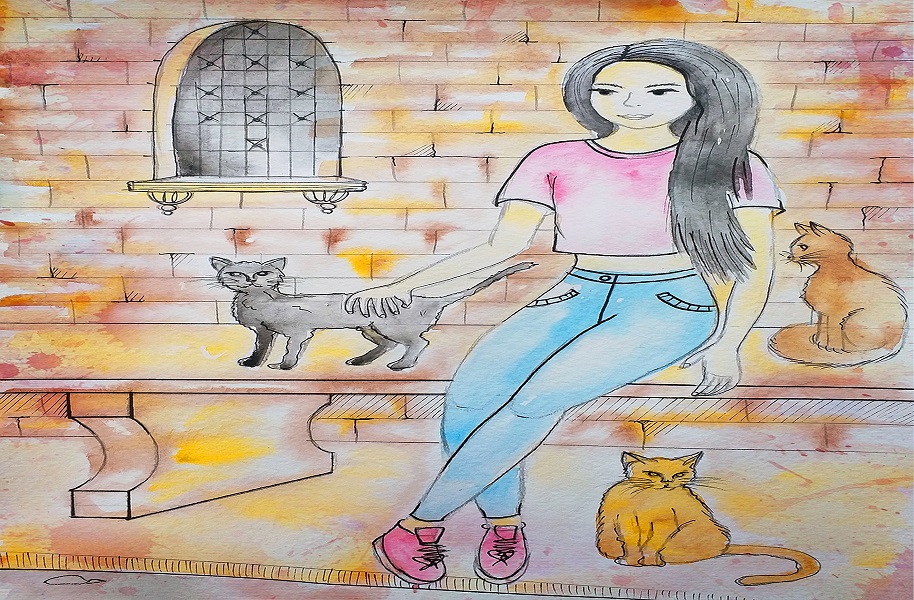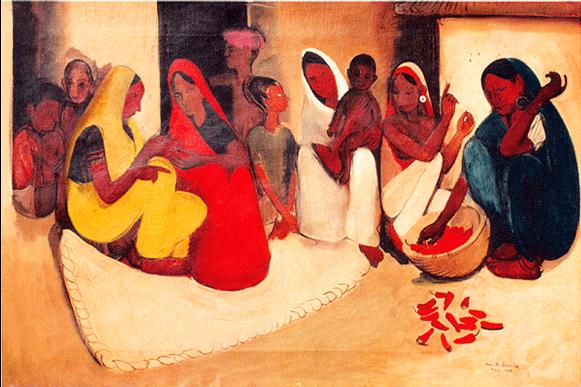Mere words are not enough to capture the sheer brilliance of Agha Shahid Ali’s poems and their plaintive cry for his beloved homeland.
The poems of The Country Without a Post Office (published in 1997) are complex and allusive, recalling the culturally rich past of Kashmir, linking that to the carnage in the 1990s. This creates a haunting continuum to the idea of Kashmir- of how it used to be a land where religion, culture, folktales merged effortlessly and how now it has turned into a land where, “death flies in.”
Needless to say, the poems in this collection are nostalgic, bemoaning the state of Kashmir of the 90s. Nostalgia comes naturally in Ali’s poetry which the blurb describes as “Agha Shahid Ali’s finest mode, that of longing.”

This longing though is immersed not only in the melancholic but also the political, historic and the literal. Each poem mingles intense pain of various kinds, be it the pain of losing a son or a relative; the distance between families; of the silence in the wake of the aftermath, with the history, culture, and the politics of the decade that pillaged an entire state. All of this pierce the reader’s heart and soul and engulf them in a profound sadness the poet holds for his home.
Some remarkable poems that portray this continuum and make the reader engage with Kashmir rather than dismissing it as a mere site of never ending conflict include the beautiful, A History of Paisley that uses the motif of the ubiquitous paisley (often seen embroidered or printed on various fabrics), A Footnote to History, At the Museum that takes a hard factual look at the emblem of our civilization, The Dancing Girl bronze statue from Harappa or the sweeping, I Dream I am the Only Passenger on Flight 42 to Srinagar which in careful couplets and tercets marks the violent culmination of a 1000 year old civilisation. The opening prose poem, The Blessed Word: A Prologue, itself establishes this continuum and the mode of longing by evoking powerful imagery of Srinagar under siege and by invoking the different names the state has had in its past. In doing so, the poet seems to be crying out for the ravaged state and its people.

Rich and decadent metaphors that suffuse his poems such as the Kashmir rose, the famed saffron spice , the paradise like Mughal gardens, the majestic mountain peaks, the stately chinar tree or the floating gardens of the Dal Lake lie uneasily in stark contrast to the conflicted reality of the state.
A case in point is the pertinent poem, The Floating Post Office. It portrays, in Ali’s typical style of invoking quaintness, a post boat delivering letters on the sly through a network of waterways when the roads are shut.
This poem brings to attention the title of the collection itself and how this poem and the title highlight that communication is a lifeline for “the city from where no news can come.” The titular poem also depicts letters unanswered, letters unsent en masse because communication has been blocked.
Now, think long and deeply about the ramifications of all forms of communication being cut off in today’s highly connected, globalised world. Think then about what happens in Kashmir, where when the rest of the world enjoys high speed internet and India basks in its Jio revolution, an entire state becomes metaphorically a country without a post office.



 Although the first Indian romantic film, Devdas, released in 1935, Bollywood’s tryst with romance began in 1929 with the Melody of Love, the first talkie film screened in India at Calcutta’s Elphinstone Picture Palace. Bollywood love generally involved singing around trees; close-ups of touching flowers depicting the taboo kiss; love triangles; and extra-marital affairs. While the Bollywood heroine mostly toed the line of tradition and propriety, films like Ijaazat (1987) and Lamhe (1991) attempted to break the Bollywood romance mold. But, even though Indian cinema remained circumspect towards depicting empowered women, TV programming took the lead with shows like Rajani (1984) as housewife turned social crusader, and Udaan (1989) about a woman’s journey of becoming an Indian police officer.
Although the first Indian romantic film, Devdas, released in 1935, Bollywood’s tryst with romance began in 1929 with the Melody of Love, the first talkie film screened in India at Calcutta’s Elphinstone Picture Palace. Bollywood love generally involved singing around trees; close-ups of touching flowers depicting the taboo kiss; love triangles; and extra-marital affairs. While the Bollywood heroine mostly toed the line of tradition and propriety, films like Ijaazat (1987) and Lamhe (1991) attempted to break the Bollywood romance mold. But, even though Indian cinema remained circumspect towards depicting empowered women, TV programming took the lead with shows like Rajani (1984) as housewife turned social crusader, and Udaan (1989) about a woman’s journey of becoming an Indian police officer.


 However, it was the arrival of Queen (2013) that put the spotlight of a box-office success on the able shoulders of its female lead, Kangana Ranaut. Queen featured Ranaut as Rani, a bride spurned a day before her wedding, who decides nevertheless to go on her European honeymoon alone. Breaking the shackles of her typical Delhi upbringing, she encounters friendly strangers and new adventures, making her confident in her independence, even as her fiancé realises his mistake. Adding to Bollywood’s explorations of women’s empowerment and female sexuality was Margarita with a Straw (2014). The film featured Kalki Koechlin as Laila who suffers from cerebral palsy struggling with her love for Khanum (Sayani Gupta), a female activist in Manhattan, even as she copes with her conservative mother’s (Revathy) opposition.
However, it was the arrival of Queen (2013) that put the spotlight of a box-office success on the able shoulders of its female lead, Kangana Ranaut. Queen featured Ranaut as Rani, a bride spurned a day before her wedding, who decides nevertheless to go on her European honeymoon alone. Breaking the shackles of her typical Delhi upbringing, she encounters friendly strangers and new adventures, making her confident in her independence, even as her fiancé realises his mistake. Adding to Bollywood’s explorations of women’s empowerment and female sexuality was Margarita with a Straw (2014). The film featured Kalki Koechlin as Laila who suffers from cerebral palsy struggling with her love for Khanum (Sayani Gupta), a female activist in Manhattan, even as she copes with her conservative mother’s (Revathy) opposition. With Lipstick under My Burkha (2016), Bollywood saw the sexual aspirations of women in small town India unveiled. The rebellious streak features prominently among the four female protagonists, with a feminine camaraderie that is increasingly becoming a major plot point of contemporary Indian cinema with films like Angry Indian Goddesses (2015) and Veere Di Wedding (2018). Not surprisingly, with the increasing influence of women directors such as Meghna Gulzar, Shonali Bose, and Alankrita Shrivastava, women’s representation has moved beyond traditional societal norms, and Bollywood’s heroine is frequently pushing boundaries in the new millennium.
With Lipstick under My Burkha (2016), Bollywood saw the sexual aspirations of women in small town India unveiled. The rebellious streak features prominently among the four female protagonists, with a feminine camaraderie that is increasingly becoming a major plot point of contemporary Indian cinema with films like Angry Indian Goddesses (2015) and Veere Di Wedding (2018). Not surprisingly, with the increasing influence of women directors such as Meghna Gulzar, Shonali Bose, and Alankrita Shrivastava, women’s representation has moved beyond traditional societal norms, and Bollywood’s heroine is frequently pushing boundaries in the new millennium.













